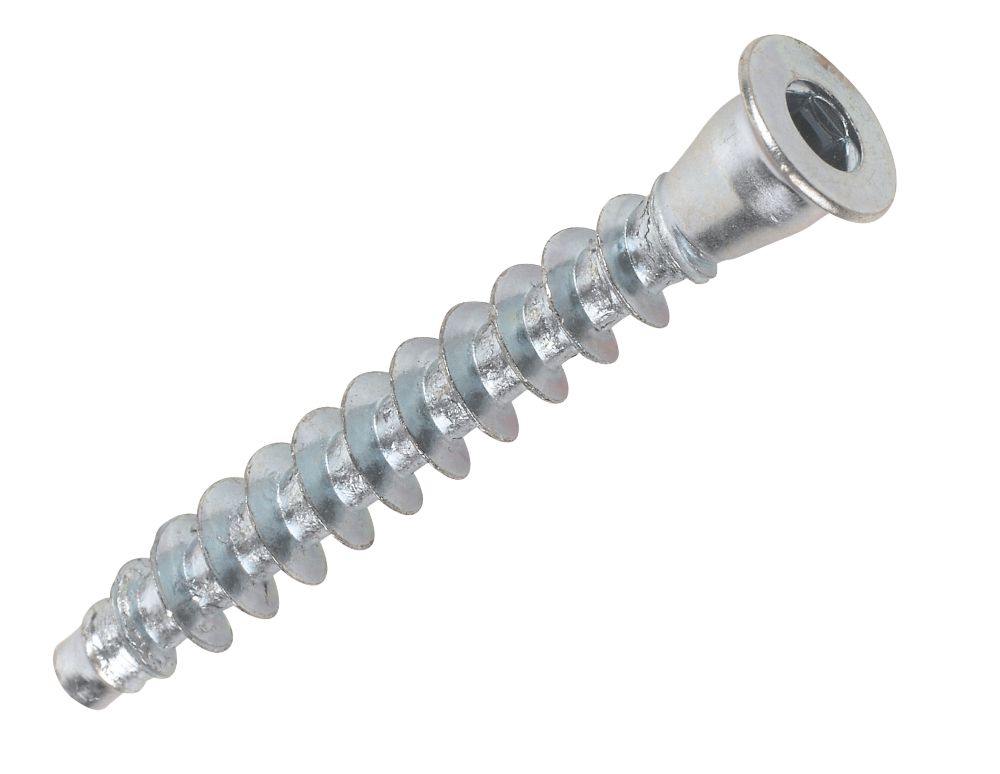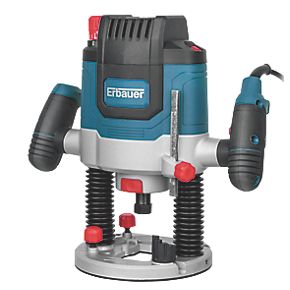Then stop watching American DIY videos! TBH American weekend warriors seem fixated with running their fixed base routers inverted in a router table and doing almost everything in a router table (and often spending as much or more than a shaper costs

). That is either naivety or ignorance, especially when you consider that plunge routers can do everything that fixed base routers can, whilst being able to do stuff that fixed base routers can't do or at least would be difficult or dangerous to do with one (or just extremely slow and error prone), e.g. plunge cutting mortises (almost impossible, limited, error-prone and hazardous with fixed base routers), sinking hardware flush to surfaces, doing jobs requiring multiple stepped passes - as you would for routing a kitchen worktop, etc. That is why in the 1990s both Bosch and Porter-Cable introduced plunge bases for their somewhat underpowered fixed base routers. (I'll now wait for the counter arguments, which statements like the above invariably generate)
What I find odd is that plunge routers were actually patented by the same American, Ray Carter, who was responsible for so many firsts in routing (e.g. the use of collets in routers, built-in shaft locking to make changing cutters easier, concentric guide bushes for template routing, the adjustable side fence, having spiral cutters to reduce power requirements whilst improving surface quality, the hinge recessing jig, the portable dovetail jig, as well as inventing a family of electric door planers based on his router motors). Quite a guy! Especially as almost all his patents were issued back in the 1920s. He actually did put most of his ideas out there on routers he manufactured, dominating the early electric portable router and power planer market in the USA, before finally selling out to Stanley in 1931. But neither he nor Stanley made his last invention, the plunge router (unless you consider a few 1970s Stanley models which were made long after Stanley had frittered away their patent and market share advantages). It actually took the German firm of Eugen Lutz (Elu - the firm upon which the modern deWalt brand was built) to create the world's first production plunge router in 1949 - the Elu MOF11. They were also responsible for the turret depth stop/depth flag arrangement, the variable speed portable router and the world's earliest consumer-level plunge router in the 1970s (the MOF96). Ironically, deWalt is now part of the Stanley-Black & Decker conglomerate
But enough of history. Just take it that Europeans and Japanese use plunge routers, whilst Americans are still living in the 1940s, and check that if you buy a plunge router, that there is a fine depth adjuster available for it which allows use in a router table...
Lest I am considered biased against fixed base routers, here is one of mine, a Bosch 1618EVS (GMF1400 in Europe) with a D-handle fixed base:
Despite being a fixed base router, I've found this design awkward to use in a router table because of the depth adjustment being so poor and hard to use when the router inverted (added to which if you undo the buckle a bit the motor falls out of the base and can hit the floor - oops):
That motor really needs to be installed in an expensive router lift to make it more useful in a router table. In fact Porter-Cables seem to be better router table routers (assuming if you
don't want to spend £100s on a router lift), because they use a copy of the old screw the body in-type depth adjustment originally designed by Ray Carter. However, since P-C manufacturing went to China in the early 2000s the quality has apparently gone down a
lot, and in any case, there hasn't been an official distributor of P-C tools in the UK for more than 25 years. Against that, many modern plunge routers can be used in a router table by simply installing a fine depth adjuster like this one (below) for the MOF96, which also fits a lot of other routers (e.g Trend T4/T5, deWalt DW613/DW615, Perles OF808, some of the Ferm and Power Devils routers, etc) at about
£15 to £20 a pop:
this is a fine height adjuster fitted to a Trend T4 router:
instead of using the turret and depth flag to control the plunge depth, the fine adjuster is screwed onto one of the threaded rods on the turret and is turned to very precisely adjust the depth of cut. With the router in a router table this would mean the router would function in the same way as a fixed base router (without the annoying tendency some of them, like the Bosch fixed base routers have, of falling out of the bottom of the router table if you undo the base lock). If you look on the Trend web site there is a
compatibility section for a large number of routers that tells you which of their bits fit which routers. A lot of the Trend stuff either dates back to or is based on the Elu MOF96 router, partly because so many of its' features were so widely copied since the 1970s.
I went and had a look at the Erbauer ER2100 router - it is very similar to the Trend T7e (below), with the same type of fine depth adjuster built-in:
I reckon both of them would be useable beneath a router table, but that depth adjuster is going to be hard work unless there is some way to get a bigger diameter handle on it.
I did watch a
review of the MacAliister MSR1200 on YouTube but what I got from that was that the tool has an American-style turret depth stop which lacks the adjustable screws of European style ones as on the Black and Decker SR100 to the right (below). The SR100 was a partial copy of the Elu MOF96 (with a redesigned body) made in the 1990s which was eventually renamed the deWalt DW613 and is still available in some markets:
(BTW the guy reviewing the MacAllister uses the fence wrong and at about 6:00 has the fence mounted on the wrong side of the cutter, risking a kick back - the rule is material to the left, cutter to the right, fence to the right of the cutter and push the router away from you - he keeps doing that he'll have an accident sooner or later, although at 7:00 he does correct his error, then pulls the router towards himself which is just as dangerous!!! So if you get a router RTFM - read the flaming manual)
The adjustable depth stop screws on turrets are more versatile and allow a fine depth adjuster to be screwed on and used, as on the Trend T4 above. If your router lacks that feature, a car jack really isn't a bad alternative, or something like this router height adjuster off eBay for about £8:
But as I said before - you really don't
need a router table to cut grooves for panels, and certainly not to rebate out for cabinet backs - and in any case with larger pieces it is almost always safer to take the router to the work and NOT the other way round
Whew!



